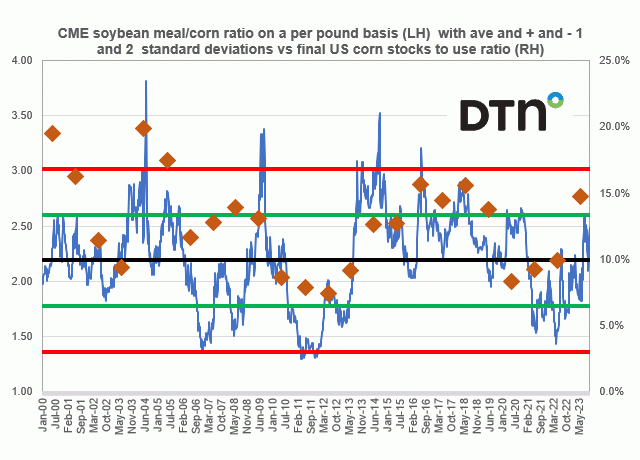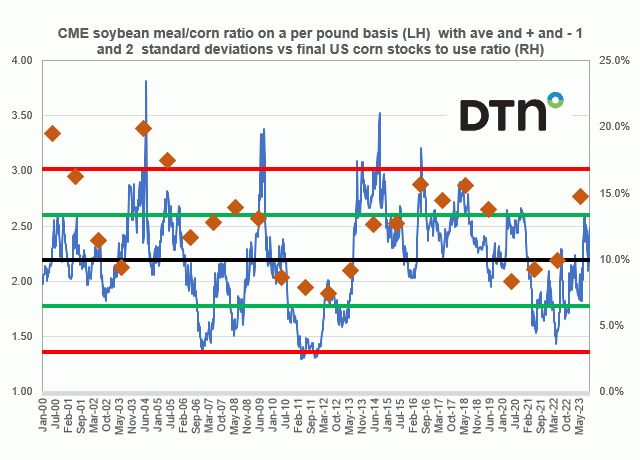Fundamentally Speaking
Soybean Sales Pace Well Below Last Year
After a slow start in part due to the logistical woes at Gulf ports in the wake of Hurricane Ida, export sales of U.S. soybeans have begun to pick up.
The latest weekly export sales total of 105.8 million bushels (mb) is a new marketing year high and actually one of the largest totals in quite some time.
Soybean prices have worked higher on talk of more Chinese buying of U.S. soybeans for Nov and Dec off the PNW and Tuesday morning that was confirmed with sales of 199,000 metric tonnes (mt) to China and 125,730 mt to Mexico, both for this marketing year.
P[L1] D[0x0] M[300x250] OOP[F] ADUNIT[] T[]
China still has a lot of soybean needs to cover for the last two months of the year so the U.S. should be in the driver's seat and begin to make up ground vs. last year's sales pace.
That could be quite a task as depicted in this graphic which shows U.S. soybean sales as of the second week of October in million bushels on the left-hand axis and as a percent of the USDA October WASDE estimate on the right-hand axis along with the change in the USDA's export projection from that October WASDE to the final estimate in million bushels also on the left-hand axis.
Though the total 1.075 billion bushels (bb) sold is the fourth highest ever as of the second week of October it is off sharply from the record 1.588 bb on the books at this point of the marketing season a year ago.
Furthermore, as a percent of the USDA Oct WASDE estimate, it is 51.4% of the 2.090 bb overseas sales projection and this is actually below the ten-year average of 55.9%.
Does this augur for a lower soybean export projection down the road or will our sales pace increase as the marketing year progresses?
Last year total sales as a percent of the October WASDE were the highest ever at 72% but our exports only increased by 65 mb from then to the final figure which is just above the ten-year average of a 43 mb acre increase.
As we noted last week in a similar piece for corn, going forward attention will be paid to Chinese soybean crush margins that have recently rebounded from six-month lows linked to poor hog feeding margins, how row crop prospects develop in South America (especially in Brazil where so far, the situation appears quite bright) and how a number of simmering political issues between Washington and Beijing will impact trade relations between the two countries.
(c) Copyright 2021 DTN, LLC. All rights reserved.






Comments
To comment, please Log In or Join our Community .